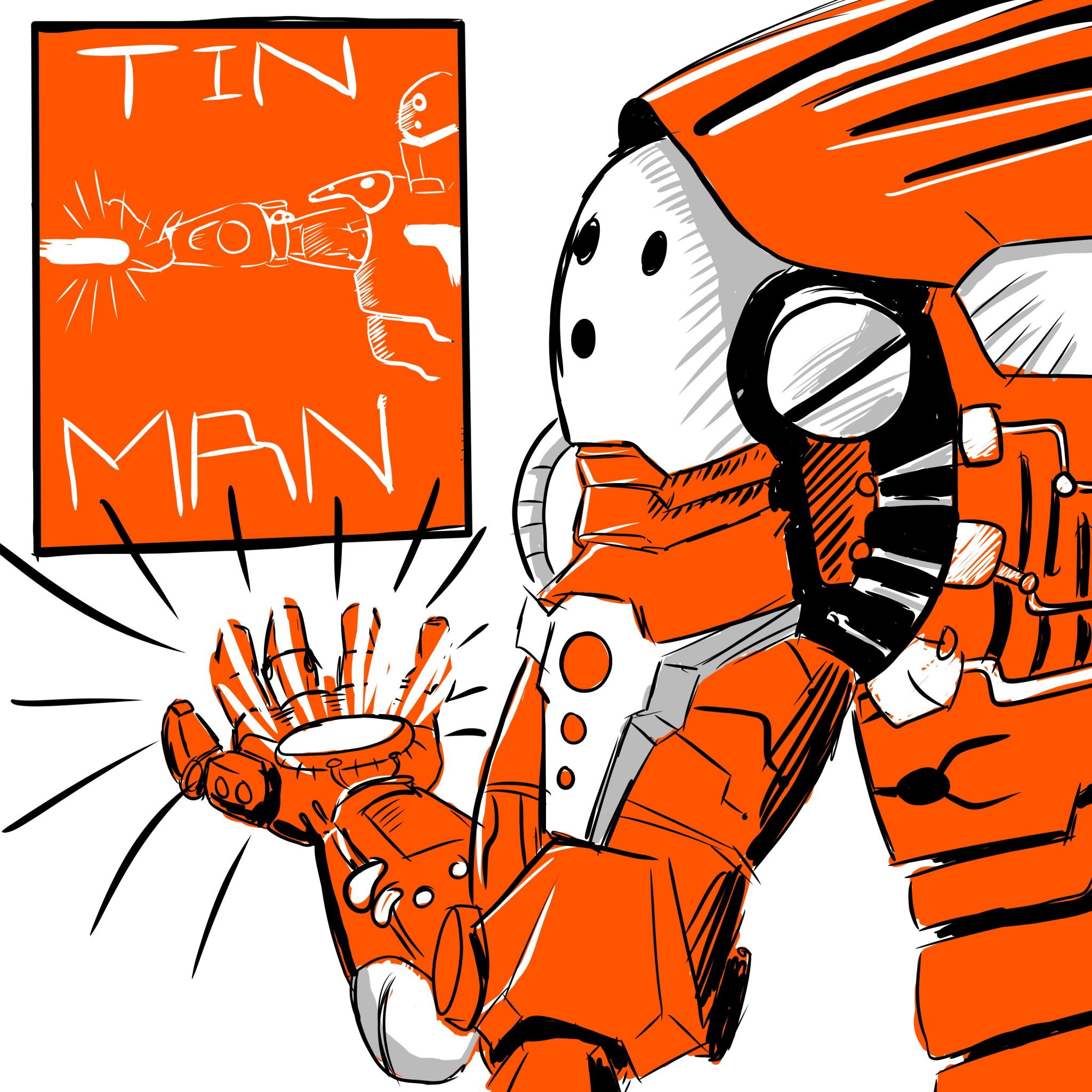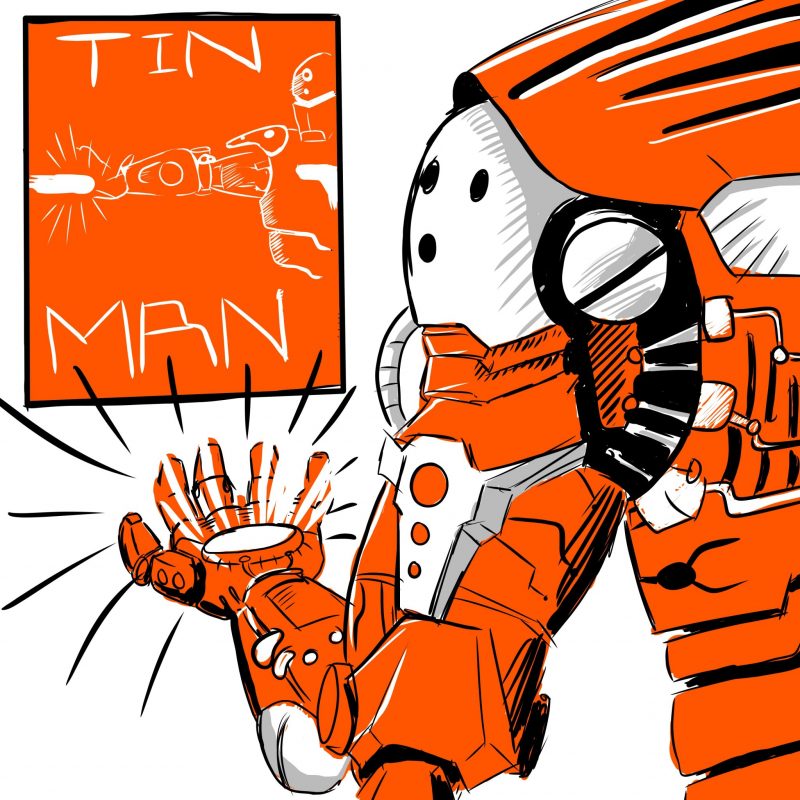Artificially artistic? The rise of A.I. illustration


You may be aware of the recent innovation known as A.I. art. There are dozens of companies and websites showing off this fascinating technology, which can generate surprisingly accurate and complex images with specific directions. The media has largely portrayed this technology as a fun and exciting novelty. However, upon further inspection, A.I. has been and will likely continue to be a burden for human artists.
When I first discovered AI art, my reaction wasn’t to contemplate the socio-economic impact of the tech, nor was it to think about its more significant implications; I just typed in ‘hotdog time machine’ and waited to see what the AI would show me and how it would be portrayed.
The Canvas is a YouTube channel that primarily explores art history and breaks down artworks to comprehend their more profound meaning. Recently, the channel released a video (No, Ai “Art” is not art.), where the content creator who runs the channel, Shawn, discusses A.I. art and his concerns surrounding the technology. The video’s other big question was whether A.I. art could be considered actual art or merely an illustration. While his points are likely to cause disagreements among artists and art enthusiasts, they potentially point to humanity’s superiority over machines in producing images.
For clarification and additional insight, The Cord interviewed Shawn about A.I. art, the struggles faced by artists and the differences he noted between art and illustration, as someone who consistently creates content around art.
Many critics of A.I art stem from an uneasy feeling about machines managing to create works of art that are indistinguishable from their human counterparts. This is a philosophical problem, but extends beyond metaphysical debates of human versus A.I. ability. There is a more tangible issue at hand.
As Shawn brings up in his video, automation has been seen as a substantial positive for nearly all societies throughout history. Automation means that certain tasks require less manpower, and people can direct more of their productivity toward other endeavors and passions. Capitalism, however, is an exception to this rule: in a capitalist system, automation means fewer jobs for people and fewer ways for them to earn a living and feed themselves or people in their households.
Automation as a problem in a capitalist system is not unique to A.I. art; one could spend hours naming the number of jobs that, within the last century, have seen human workers replaced with automated technology. Some have brought up potential ideas to solve this predicament (A.I. expert Calum Chace makes some interesting suggestions), but there is no simple or direct solution.
In his video, Shawn points out that the fact that we are talking about art is important, “For art, there is something different about automation because we really want the human touch.”
Art feels like a uniquely human activity and has been for millennia. The fact that pictures can now be created with the push of a button seems to diminish it. This is, of course, assuming that A.I. artists create ‘art’, a point that will be addressed later in this article
Although artists enjoy innovating, experimenting and challenging norms, there are concerns that this generally isn’t a lucrative way to make art. Most artists are forced to “sell out” (for lack of a better word). They create images for corporations that, while not usually creative in themselves, support artists in their endeavors. . You see these works of art daily, typically with marketing in numerous forms. A.I. art is a threat to this vital source of artists’ income.
Additionally, this corporate art is infamously “stale and soulless.” The recent trend of simplifying logos is a perfect example of soulless, safe art pushed by corporations under the guise of minimalism. Another standard paradigm is the inoffensive, cheeky-looking character that pops up on your webpage whenever you lose internet connection; like the 8-bit dinosaur on google or the happy looking astronaut sitting on the moon on YouTube. There are many other examples of corporations following this hackneyed art trend. With the assistance of A.I. artists, the staleness of the art is likely only going to grow.
When explaining how a company could utilize A.I. art, Shawn elaborated on his belief that technology will not manage to produce precisely what the companies are looking for every time. Still, the A.I. seems to hold a firm advantage when it comes to preliminary sketching and image modification, roles more traditionally filled by human artists. Even if we consider the possibility that a human can complete the work with the same mathematical detail that an A.I. can, a human will still work significantly slower and much more expensive than the machine, since their time and labour are worth more.
It’s tough to predict the future, but we have already witnessed A.I. artists becoming more sophisticated at an alarming rate. The better A.I. artists become, the more difficult it will be for human artists to make a livable wage with their art. Shawn explained that many of his artist counterparts have already begun feeling the effects of A.I. artists financially. So a question must be asked: How should artists adapt to this changing environment?
One thing that is recommended for artists to do is to draw on the advantages they still maintain over A.I. To understand these advantages, we must seriously consider whether A.I. art should be considered ‘art’ in the true sense of the word. For Shawn, A.I. art is not truly art since it fails art’s most important test; creating engagement with its audience. He states in his video, “if it doesn’t create engagement with an audience, aside from creating a sense of beauty… I’m more comfortable calling it an illustration.”
A.I. art functions by compiling millions upon millions of human-made works and combining them to create the most accurate representation of the prompt it was given. When a human creates a true work of art, there is a deeper meaning or intention beyond the surface-level aesthetics of the piece. With A.I., there is no such interior meaning; it is merely what French Painter Marcel Duchamp dubbed as ‘retinal art’ or art intended only to please the eye.
“There’s more to a pretty image,” Shawn said, “that more that I’m presenting is so much more compelling than the prettiness or the beauty of the image; that’s why I love art.”
While this stance does condemn A.I. art to the realm of ‘illustration,’ some human-made artwork is to be caught in the crossfire. Many artists create images only intending to present beauty and aesthetics. Shawn doesn’t mean to imply that these works are no longer worth creating, but categorizing these works as ‘illustrations’ rather than art is controversial, to say the least.
Illustration is most susceptible to takeover by A.I. artists, so there may be more incentive to move away from retinal art. A.I. will (likely) never be able to create a deeper meaning in their images, not in the way humans can create it. Strangely, while likely becoming an economic detriment to the art community, A.I. art may push artists to create more creative and meaningful work that A.I. is incapable of replicating.
If you follow this thought process, this is humanity’s decisive advantage over A.I.; only humanity can create a more profound meaning within their images.
Shawn is optimistic about A.I. art inspiring truly passionate artists who prioritize standing out from the art algorithms. As mentioned earlier, this path is typically not lucrative for artists. Still, he hopes that some develop a certain attitude; “…And if they don’t make money, f*ck it, they’ll continue making art because they love making art.”
He hypothesized a future where artists work part-time jobs to support themselves and passionately endeavor to create meaningful works as their priority, although most part-time jobs do not provide a livable income in contemporary times.
In a system where more automation means fewer opportunities for workers, it’s frightening to see this trend extend to artistic realms. Perhaps this automation will push artists into creating more meaningful works, but is this a fair trade-off for the economic sacrifices they will be forced to make? It’s essential to question who this technology is really helping and whether or not we’d be better off without it.

